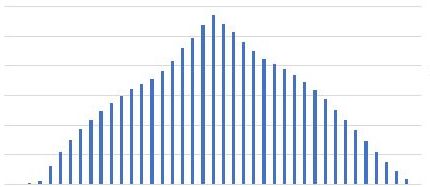In general, the existing roof alignment or slope alignment usually also determines the panel alignment. Exceptions are made for flat roofs and other flat surfaces. Alignment refers to the main direction of incidence of the solar panels.
The optimum way to generate energy is always solar tracking. The panels are usually tracked in groups according to the current position of the sun using a mechanism.
This technology is rarely used today. The reason for this is the cost of the mechanics and the susceptibility to errors. Only limited space requirements with maximum necessary yield are still a reason for tracking today.
Depending on the main orientation, a decision is essentially made between the following orientations:
South-facing, east/west-facing, north-facing.
These result from the predominant roof constructions in Europe with gable roofs, which generally always have two roof surfaces pointing in opposite directions.
South-facing
Here, the highest energy yield is around midday. As this is also the time when solar radiation is at its strongest, the highest energy yield is also achieved at this time. In terms of overall efficiency per m² of solar panel, the south-facing orientation is still usually the most efficient.

East/west orientation
In this case, both roof slopes, i.e. the east and west sides, are usually covered with panels.
The great advantage of this design is the evenly distributed energy generation throughout the day. This enables a higher self-utilization of photovoltaics. The system delivers around 50% of the possible output in the morning (depending on the season) and maintains this until the evening. The typical midday peak of the south-facing orientation is not as strong here.

North orientation
With a north-facing orientation, direct sunlight practically never falls on the panels, depending on the roof pitch. Nevertheless, such an installation can make sense if there are no other alternatives or as a supplement to a south-facing orientation.
The much cheaper thin-film modules are often used here. These are generally less efficient than solar cells made of crystalline silicon, but are also much cheaper to manufacture. This, in turn, improves the energy gain per investment value.
In addition, these cells have more power than normal cells in cloudy conditions (also indirect irradiation). The price advantage in particular can make such an installation attractive. The daily distribution of energy production is similar to an east/west installation.

